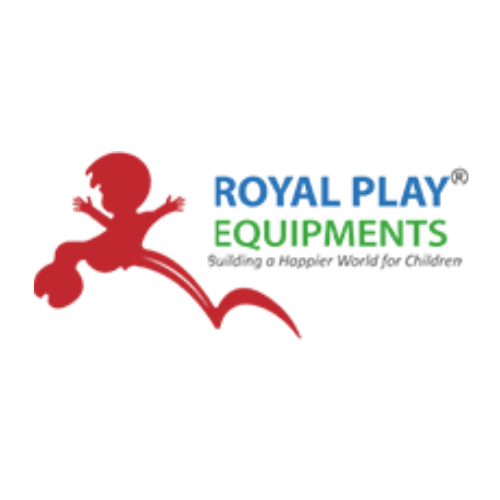You know that feeling when you walk into work and everything just clicks? The team’s humming, tasks are clear, and you feel safe, like the place has your back. That’s not just luck—it’s what a solid occupational health and safety system can do. And ISO 45001? It’s the gold standard for making workplaces safer, healthier, and, frankly, happier. But here’s the thing: a standard like ISO 45001 doesn’t just magically transform your workplace. It takes training—real, hands-on, let’s-get-this-right training—to bring it to life. So, let’s talk about why ISO 45001 training is something every employee and worker representative should care about, and how it can make your workday feel less like a grind and more like a win.
What’s ISO 45001, Anyway?
If you’ve heard the term “ISO 45001” thrown around in meetings but aren’t quite sure what it means, you’re not alone. It’s not some cryptic code or a fancy corporate buzzword. ISO 45001 is an international standard for occupational health and safety management systems. Think of it as a blueprint for keeping your workplace safe—physically and mentally. It’s about preventing accidents, reducing risks, and making sure everyone goes home in one piece. Sounds pretty great, right?
But here’s where it gets real: ISO 45001 isn’t just a dusty manual sitting on a manager’s shelf. It’s a living, breathing system that needs everyone—from the shop floor to the top floor—to understand it. That’s where training comes in. Without it, the standard is just words on a page. With it? It’s a game-changer.
Why Should You Care About Training?
Okay, let’s be honest. When you hear “training,” you might picture a boring PowerPoint session or a stack of handouts you’ll never read. But ISO 45001 training isn’t like that—or at least, it shouldn’t be. Done right, it’s engaging, practical, and, dare I say, kind of empowering. Here’s why you, as an employee or worker rep, should give it a chance:
- You’ll know what’s going on. Training breaks down the standard into plain English (or whatever language you speak). You’ll learn what risks to look out for, how to report them, and what your role is in keeping the workplace safe.
- It’s about your well-being. This isn’t just about checking boxes for compliance. It’s about making sure you feel safe—whether that’s avoiding a trip hazard or knowing how to handle stress at work.
- You get a voice. As a worker representative, training equips you to advocate for your team. You’ll understand the system well enough to push for changes that actually matter.
- It’s a confidence booster. Knowing the ins and outs of safety protocols makes you feel more in control. You’re not just reacting to problems—you’re preventing them.
Let me tell you a quick story. I once worked with a factory team where accidents were, sadly, a regular thing. A spilled coffee here, a loose cable there—it added up. After ISO 45001 training, the workers started spotting hazards before they became problems. One guy even caught a faulty machine part that could’ve caused a serious injury. That’s the kind of impact training can have. It’s not just learning; it’s owning your role in safety.
The Nuts and Bolts of ISO 45001 Training
So, what does ISO 45001 training actually cover? It’s not about memorizing a 100-page standard (thank goodness). Instead, it’s tailored to your role. For employees, it might focus on practical stuff like identifying hazards, using safety equipment, or understanding emergency procedures. For worker reps, it digs deeper—think leadership skills, risk assessment, and how to collaborate with management to improve safety culture.
Here’s a quick rundown of what you might expect:
- Understanding the standard: You’ll get the basics of ISO 45001, like its focus on risk prevention and continual improvement.
- Spotting hazards: Learn to recognize risks in your workplace, from physical dangers (like unguarded machinery) to psychosocial ones (like workplace stress).
- Incident reporting: Know how to flag issues without fear of blame. A good system encourages openness, not finger-pointing.
- Emergency preparedness: What to do if things go wrong—think fire drills, first aid, or evacuation plans.
- Your role in the system: Whether you’re an employee or a rep, you’ll learn how you fit into the bigger picture of workplace safety.
Training can take different forms—classroom sessions, online courses, or hands-on workshops. Some companies even bring in experts from organizations like the International Labour Organization (ILO) or certified training providers like Bureau Veritas or TÜV SÜD. The key is that it’s interactive and relevant to your workplace. Nobody wants to sit through a generic lecture that feels like it was written for someone else.
Why It’s Not Just for the “Safety People”
Here’s a common misconception: safety training is only for the folks in high-vis vests or the ones with “safety” in their job title. Wrong. ISO 45001 is about everyone in the organization. Think about it—hazards don’t care about your job description. A cluttered desk can trip up an office worker just as easily as a slippery floor can trip a warehouse employee. And stress? That’s universal, whether you’re answering emails or operating machinery.
As a worker representative, you’re in a unique spot. You’re the bridge between employees and management. Training gives you the tools to speak up for your team, spot issues early, and push for changes that make everyone’s day better. For employees, it’s about empowerment. You’re not just following rules—you’re actively shaping a safer workplace.
Let’s pause for a second. Have you ever worked somewhere where you felt like nobody cared about safety? Maybe a loose stair railing went unfixed for months, or you were told to “just deal” with a stressful workload. That’s the opposite of what ISO 45001 stands for. Training flips that script, giving you the knowledge and confidence to demand better.
The Emotional Side of Safety
Let’s get real for a moment. Safety isn’t just about hard hats and checklists—it’s about people. It’s about knowing you can do your job without worrying about getting hurt. It’s about feeling valued, like your employer actually cares about your well-being. ISO 45001 training brings that human element to the forefront. It’s not just technical; it’s emotional.
Imagine this: you’re working on a busy construction site, and you’ve just finished a training session on risk assessment. You spot a scaffold that doesn’t look right. Before training, you might’ve shrugged and thought, “Not my problem.” But now? You know to report it, and you feel good doing it because you’re protecting your crew. That’s the kind of mindset shift training can spark.
And for worker reps, it’s even bigger. You’re not just looking out for yourself—you’re standing up for your colleagues. That’s a powerful feeling. It’s like being the goalkeeper for your team, catching problems before they score a goal against safety.
How Training Fits Into Your Workday
Now, you might be thinking, “Sounds great, but when am I supposed to fit this training in?” Fair question. Work’s busy enough without adding another task to your plate. The good news? Good ISO 45001 training is designed to fit into your world. Some options are online, so you can do them at your own pace. Others are short, targeted workshops that get to the point. And the best part? The skills you learn don’t just stay in the training room—they make your job easier every day.
For example, let’s say you work in a retail store. Training might teach you how to spot a wet floor before a customer slips or how to organize stock safely to avoid back strain. In an office, it could mean learning how to set up your desk to prevent neck pain or how to handle stress during a busy season. These aren’t just “safety” skills—they’re life skills.
And here’s a little seasonal tie-in: if you’re reading this around August 2025, you might be gearing up for a busy fall season—maybe back-to-school sales or holiday prep. Training now can set you up to handle that chaos safely, whether it’s managing crowds or keeping your cool under pressure.
The Bigger Picture: Why ISO 45001 Matters
Let’s zoom out for a second. ISO 45001 isn’t just about your workplace—it’s part of a global push for better working conditions. The International Organization for Standardization (ISO) developed it to replace older standards like OHSAS 18001, and it’s now used by companies worldwide, from small businesses to giants like Amazon or Toyota. Why? Because it works. Studies from the ILO show that workplaces with strong safety systems see fewer accidents, lower turnover, and even better productivity.
But here’s the catch: it only works if everyone’s on board. That’s why training isn’t just a one-and-done thing. It’s about building a culture where safety is second nature. Think of it like brushing your teeth—you don’t do it once and call it good. You make it a habit. Training helps make safety a habit for your whole team.
Common Myths About ISO 45001 Training
Before we wrap up, let’s bust a few myths that might be floating around:
- “It’s only for big companies.” Nope. ISO 45001 works for businesses of all sizes, from mom-and-pop shops to global corporations.
- “It’s too complicated.” Not true. Good training breaks it down into bite-sized pieces that make sense for your role.
- “It’s just paperwork.” Wrong again. It’s about real-world actions—spotting risks, fixing problems, and looking out for each other.
- “I don’t need it; I’m already careful.” Even the most cautious person can learn something new. Plus, it’s about teamwork, not just individual effort.
Your Next Steps: Making Training Work for You
So, you’re sold on the idea of ISO 45001 training (or at least curious). What’s next? Here’s how to make it happen:
- Talk to your employer. Ask about training opportunities. If they’re pursuing ISO 45001 certification, they’ll likely have a plan in place.
- Look for reputable providers. Organizations like BSI, SGS, or local training firms offer courses tailored to ISO 45001.
- Get involved as a worker rep. If you’re a representative, push for training that includes everyone, not just management.
- Apply what you learn. Don’t let the training gather dust. Use it to spot hazards, suggest improvements, and make your workplace better.
You know what’s cool? When you take what you’ve learned and actually see it make a difference. Maybe you catch a small issue before it becomes a big one, or you help a coworker feel safer speaking up. Those moments add up, and they’re what ISO 45001 training is all about.
Final Thoughts: Safety Is Everyone’s Win
At the end of the day (oops, I promised not to say that!), ISO 45001 training isn’t just about rules or compliance. It’s about creating a workplace where you feel valued, protected, and ready to do your best. It’s about knowing that whether you’re stacking shelves, typing emails, or running a factory line, you’ve got the tools to stay safe and help others do the same.
So, next time you hear about ISO 45001 training, don’t roll your eyes or zone out. Embrace it. It’s not just a course—it’s a chance to make your work life better, safer, and maybe even a little more fun. Who doesn’t want that?





